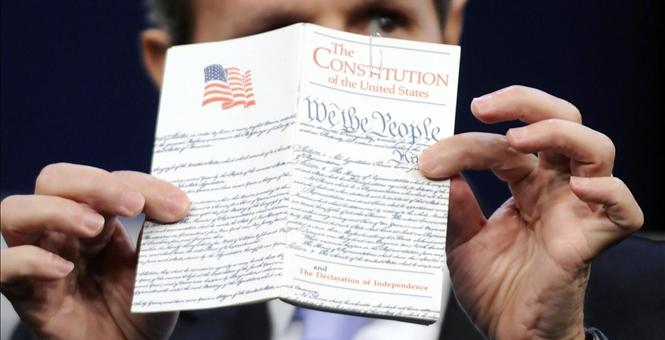From the archives discussing practical steps — first posted October 10, 2013:
Those who adhere to the values of the nation’s Founders as outlined in the Declaration of Independence and U.S. Constitution face a mismatch of resources. We must work hard and smart to overcome the advantages of the left.
Part of the problem has been that our best writers and talkers have no idea what we’re supposed to do about the problem. Guys like Glenn Beck often sound despondent. Rush Limbaugh comes across as very frustrated. Rarely is practical positive action prescribed by anyone. Instead what we mostly hear and read is wonderful analysis about how everything is going to hell, the culture has deteriorated, and the electorate is no longer what it once was. How could it be any other way when only the political left is involved in effective political outreach? The result of all this lack of knowledge is despair.
Since the rise of the “tea party” in 2009 it has been shown dramatically that many Americans are ready to newly enter the political fray and debate the great policy questions in the public square. It would seem evident, however, that after their entry over four years ago those new to politics are far less effective than they ought to be.
Few political people give any thought to the fact that there are mass communications experts out there that currently assist businesses, non-profits, and other non-political organizations in the private sector. Their efforts are aimed at winning the attention of the public in a crowded marketplace.
One important early step would be to unite the two — the idle political army with the communications professionals. Conservative individuals and groups must learn how to impact their communities and market their ideas. They need to learn what any business of any size has to know in order to effectively bring positive attention to a new product or service.
The goal isn’t to have the communications pros do the work for the army. The goal is to have the army learn how to do the outreach for themselves.
It’s seems obvious to me that if the following groups and organizations understood how to effectively do outreach — we’d win the argument and the day. There would be a lot fewer low information voters.
- In Illinois alone just one of the “tea party” organizations lists 57 aligned groups spread throughout the state. They might be doing some good work but they can do much better. Just look at the 2012 election results in Illinois — it was one of the worst for conservative and Republican candidates on record despite the fact that the tea partiers had been on the field for three and a half years.
- In one county — Kane County — the Republican organization lists 8 additional township committees and 3 more auxiliary groups aimed at Hispanics, young Republicans, and women. Residents of Kane know how much room for improvement there is here. It’s easy to assume few un-political Kane residents are even aware of their local GOP committee.
- Illinois’ largest county — Cook — has a county-wide party, and separate committees in many of the 30 townships and 50 wards. On their website they also list many auxiliaries including those aimed at recruiting young professionals and various ethic groups. Suburban Cook County used to have a lot more competitive ground, so the ineffectiveness of most of those groups is plain to see.
- Veterans of Chicago area politics are familiar with many informal and often un-named local and regional networks of individuals who meet, share information, and actively volunteer during campaign season. Most desire to be more effective but don’t know how to.
Again, to summarize, how many of the above genuinely impact the public debate in their area? The answer is demonstrated by the Illinois election results cycle after cycle — especially in presidential election years where the Republican Party’s vote count is abysmal.
Image credit: www.townhall.com.

